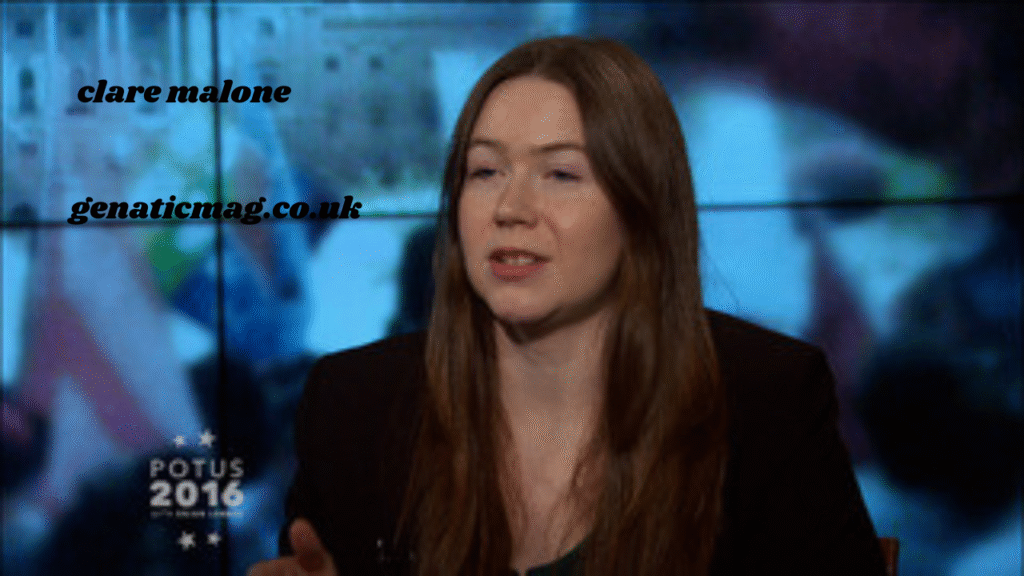Clare Malone, a name recognized in the realm of modern journalism, has carved out a respected space with her nuanced takes on politics, culture, and media. Known for her incisive writing, calm analytical voice, and sharp observational skills, she continues to be a compelling force in today’s media landscape. This article explores Clare Malone’s professional journey, her reporting style, notable projects, and the evolving impact of her work. If you’re wondering who Clare Malone is, or what defines her contributions to contemporary journalism, this comprehensive piece offers a deep look.
Early Life and Educational Foundations of Clare Malone

Before she became a widely cited journalist and commentator, Clare Malone’s background shaped the clarity and depth that would later become her signature. Although details of her early upbringing remain somewhat private, her educational pursuits paved a decisive path toward journalism. She is a graduate of Georgetown University, a foundation that undoubtedly helped sharpen her analytical thinking and writing prowess. Her academic background helped establish her credibility as a thoughtful interpreter of the complex intersection between media, politics, and the public.
Clare Malone’s early intellectual interests leaned toward cultural commentary and American political structure. These twin fascinations provided the groundwork for her multifaceted writing voice—one that effortlessly bridges cold data analysis with human stories.
The FiveThirtyEight Era: Clare Malone’s Analytical Rise

A major turning point in Clare Malone’s career was her tenure at FiveThirtyEight, a media outlet renowned for data-driven journalism. During her years at FiveThirtyEight, she emerged as one of the site’s leading writers and podcasters, particularly celebrated for her contributions to political analysis.
Unlike many in political journalism who rely solely on opinion or conjecture, Clare Malone’s work was deeply rooted in statistics, historical context, and socio-political dynamics. She often provided the essential “why” behind polling data, unpacking complex voter behavior and electoral shifts. Her role in the FiveThirtyEight Politics Podcast allowed her to extend her influence further, becoming a recognizable voice for listeners interested in more than just headlines.
In this role, Clare Malone distinguished herself through her ability to challenge conventional narratives. She offered layered insights on everything from the 2016 presidential election to the shifts in American political identity during the Trump era. Her critiques were balanced and intellectually rigorous, making her stand out in an increasingly polarized media landscape.
A Thoughtful Transition: Clare Malone’s Post-FiveThirtyEight Work

After her time at FiveThirtyEight, Clare Malone took bold steps to expand her journalistic reach. She joined The New Yorker as a staff writer, further solidifying her position in long-form, investigative, and cultural journalism. At The New Yorker, her work retained its thoughtful edge while branching into broader territories including media criticism, personal essays, and feature-length narratives.
This move marked a significant moment in Clare Malone’s career—an evolution from data-centered storytelling to more personal, narrative-rich journalism. Her writing style remained crisp, but now carried deeper emotional undertones, showing her range as both a political analyst and cultural observer.
In these roles, Clare Malone has tackled topics such as the ethics of media coverage, race and identity in political spaces, and the changing role of journalists in an algorithm-driven society. Her transition showcased not only her versatility but also her commitment to evolving with the times without sacrificing intellectual depth.
Clare Malone’s Signature Style: What Sets Her Writing Apart?
Clare Malone, ??—those who follow her work understand that her voice is both steady and fearless. Her writing style is marked by an even tone, often eschewing dramatic language in favor of carefully chosen words and robust analysis. What truly sets Clare Malone apart is her ability to make complex topics accessible without dumbing them down.
She has a journalist’s instinct for finding the heart of a story and a philosopher’s temperament in questioning assumptions. Whether she’s analyzing why certain political narratives catch on, or reflecting on the pressures within media institutions, her tone is often reflective but never vague.
Moreover, Clare Malone’s work frequently touches on media literacy—helping her audience understand not just what the news is, but how and why the news is made. In today’s fast-paced information cycle, this kind of meta-awareness is crucial, and she provides it with both humility and authority.
Clare Malone and the Landscape of Modern Journalism
As journalism grapples with questions of trust, transparency, and transformation, Clare Malone stands as a model for ethical and adaptive reporting. She has been vocal about the internal contradictions within newsrooms, especially regarding diversity, newsroom hierarchy, and the performative nature of social media within journalism.
Her critiques are not laced with cynicism but with a genuine desire to see media do better—by its workers and its audience. In many ways, Clare Malone represents the conscience of thoughtful journalism in an age where outrage often gets more clicks than accuracy.
She is also attuned to the challenges faced by female journalists, especially those navigating high-profile roles in political reporting. While she rarely centers herself in her stories, her presence alone offers representation and inspiration for the next generation of journalists seeking to cover complex, often contentious topics with clarity and depth.
Public Perception and Reader Loyalty: Why Clare Malone’s Audience Grows
Clare Malone’s growing audience base can be attributed to her consistent reliability and intellectual integrity. Readers value her because she doesn’t follow trends—she analyzes them. She doesn’t chase virality—she questions it. In a time when many commentators veer toward extremism for the sake of visibility, Clare Malone offers something increasingly rare: trust.
Her readers and listeners span a wide ideological spectrum, a testament to her balanced approach and fact-forward content. People come to her work not for confirmation, but for exploration. Whether covering the shifting tides of political coalitions or the media’s role in shaping reality, she invites her audience to think more deeply and more empathetically.
Future Directions: What Lies Ahead for Clare Malone, ??
As journalism continues to evolve in a digital-first, fragmented media economy, Clare Malone’s role is more essential than ever. Whether she continues to write for premier outlets or branches into independent journalism, her voice will remain a vital one.
Clare Malone is poised to continue being a leading light in American journalism—someone who not only comments on the news but helps her readers and listeners interpret the world more wisely. With every article, podcast, and essay, she challenges the shallow narratives that often dominate discourse and replaces them with depth, context, and genuine thought.
Conclusion: Clare Malone, ?? — A Modern Journalist for a Complex Age
Clare Malone’s story is not just one of career milestones but of intellectual integrity, adaptation, and principled critique. Her evolution from political analyst at FiveThirtyEight to cultural writer at The New Yorker exemplifies a journalist who grows with her audience, constantly refining her voice to meet the times.
In every role she undertakes, Clare Malone upholds the values of precision, insight, and empathy—making her one of the most respected journalists working today. Whether you are a casual news consumer or a seasoned political junkie, keeping an eye on Clare Malone’s work is to stay connected to journalism that respects your intelligence and expands your understanding.
Also Read : Bahar D Yilmaz, ??, Insights into a Visionary Healer, Teacher, and Author
